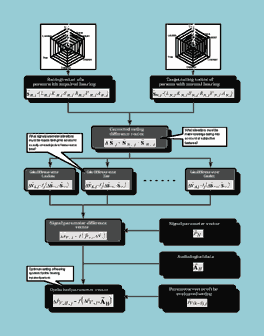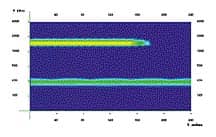There may be good reasons why you should initiate that remodeling project for your office during 2005.
There may never be a better time than 2005 to fix-up, remodel, or redecorate the building, clinic, or offices that house your hearing care practice. Naturally, you will want to keep out-of-pocket expenditures to a minimum and recover as much of the funds spent as quickly as possible. Fortunately, both those hearing care professionals who own their own buildings and those who lease their property can take advantage of a variety of tax deductions, credits, and other tax breaks to achieve those goals.
Under the basic tax rules, additions and improvements are usually depreciated in the same manner as the existing property would be depreciated if it were placed in service at the same time as an addition or improvement. For example, a roof replaced on a commercial building is usually treated as 39-year nonresidential real property, regardless of how that building is actually written off or depreciated.
Imagine, however, that those expenditures for improvements, additions, or remodeling projects could qualify for faster write-offs—even a direct reduction of the hearing practice’s tax bill. The result would be a reduction in the practice’s out-of-pocket expenses, faster (and larger) write-offs to reduce its tax bill and, most importantly, a much improved business environment.
Faster New Write-offs for Leaseholder Improvements
First, consider the unique, new faster write-off for so-called “leasehold improvements” created by the American Jobs Creation Act of 2004. The new law creates a 15-year recovery period for so-called “qualified leasehold improvement property” placed in service between October 22, 2004 and January 1, 2006. All improvements must be made to the interior portion of the hearing care practice’s building.
This write-off is not optional. The new law, temporarily, reduces to 15 years the depreciation period for the improvements made to leased business property (and for qualified restaurant property). Qualified leasehold improvement property is an improvement to the interior portion of a building that is nonresidential real property—provided certain requirements are met, of course
The improvements must be made under or pursuant to a lease either by the lessee (or sublessee) or by the lessor. The lessee and lessor cannot be related and, furthermore, the improvement must be made to that portion of the building occupied exclusively by the lessee (or sublessee). Additionally, the improvement must be placed in service more than 3 years after the date the building was first placed in service (ie, the building must be more than 3 years old). Expenditures that do not qualify include:
- The enlargement of a building;
- Any elevator or escalator;
- Any structural component that benefits a common area, or
- The internal structural framework of the building.
However, since a lessee does not usually retain the improvement, upon termination of the lease, a loss normally results. This loss is computed by reference to the improvement’s adjusted basis at the time of the lease termination. A lessor who disposes of or abandons a leasehold improvement (made by the lessor) upon termination of the lease may use the adjusted basis of the improvement at such time to determine its gain or loss.
Thanks to a special exception contained in the new rules, a 30% or 50% “bonus” depreciation allowance is available for “qualified leasehold improvement property.” Unfortunately, this bonus depreciation may only be taken for leasehold improvements placed in service before January 1, 2005.
Divide for a Larger Write-Off
The Internal Revenue Service (IRS) recently announced that it would go along with a ruling by US Tax Court that permits some elements of a building to be separately depreciated as personal property. It has agreed with the court’s method for determining whether an item is a structural component (ie, real property) or personal property. The separate, shorter recovery period for the personal property elements of a building is referred to as “cost segregation.”
The following items, at least if related to the operation and maintenance of a building, are examples of structural components: bathtubs, boilers, ceilings (including accoustic ceilings), central air conditioning and heating systems, chimneys, doors, electrical and wiring, fire escapes, floors, hot water heaters, HVAC units, lighting fixtures, paneling, partitions (if not readily removable), plumbing, roofs, sinks, sprinkler systems, stairs, tiling, walls and windows.
Expenditures for other “improvements” that are not structural components and not related to the operation of the building, can now in many cases be separately written-off by a hearing care practice using much shorter recovery periods. In fact, many of those “personal property” items may qualify for the first-year, Section 179 expensing deduction.
First-Year Expensing
In order to qualify as an immediately “expensed” or Section 179 allowance, property must be tangible Section 1245 property, depreciable, and acquired by purchase for use in the active conduct of a practice or business. The Section 179 first-year expensing allowance does not include a building or it’s structural components. It can, however, include many Section 1245 personal property costs—but only to the limits.
Those limits mean that a hearing practice can currently expense up to $100,000 in Section 179 expenditures every year. Should total expenditures for Section 179 property exceed $400,000 in any year, the deduction must be reduced dollar-by-dollar by any excess.
Rehabbing Versus a Fix-Up
The tax rules also contain a unique tax credit that can reduce the tax bill of any hearing care practice incurring so-called “rehabilation expenditures” during the tax year. The rehabilitation investment tax credit equals 20% of the qualified rehabilitation expenses (QRE) for certified historic structures and 10% of QRE for qualified rehabilitated buildings first placed in service before 1936 (other than certified historic structures). No energy credit is allowed on that portion of property that is attributable to QRE.
A building and its structural components constitute a qualified rehabilitated building (QRB) if they are 1) substantially rehabilitated and 2) placed in service before the rehabilitation begins. Property other than a certified historic structure must also satisfy 3) a “wall retention” test, 4) an age requirement, and 5) a location of rehabilitation requirement. Property is considered substantially rehabilitated only if the expenditures during a self-selected 24-month measurement period (60-month period for phased rehabilitation) are more than the greater of the adjusted basis of the property or $5,000.
QRE does not include new construction; an enlargement; the cost of acquisition; non-certified rehabilitation of a certified historic structure; rehabilitation of tax-exempt use property; expenditures, generally, that are non-depreciable; and lessee-incurred expenditures if, on the date the rehabilitation of the building is completed, the remaining term of the lease (determined without regard to renewal periods) is less than the property’s recovery period.
Energy Investment Credit
Another unique tax credit—a direct reduction of the hearing care practice’s tax bill rather than a deduction from the income (upon which that tax bill is computed)—is available for so-called “energy” property. The business energy investment credit is equal to 10% of the basis of energy property placed in service during the year (subject to reduction if the property is financed by tax-exempt private activity bonds or by subsidized energy financing).
No energy credit is allowed for that portion of the basis of property for which rehabilitation investment credit is claimed. An advance energy investment credit may be claimed under special rules for progress expenditures.
Energy property includes equipment that uses solar energy to generate electricity to heat or cool a structure or to provide solar process heat. It also includes equipment that produces, distributes, or uses energy derived from geothermal deposits (but only in the case of electricity generated by geothermal power, up to the electrical transmission stage). To qualify for the credit, the equipment must be depreciable (or amortizable) and must meet performance and quality standards prescribed by the regulations. No partial deductions are available, so a hearing care practice must complete the construction, reconstruction, or erection of the property. If the property is acquired, the practice must be the first to occupy it.
Fixing Up Land and Reaping the Rewards
Under our tax rules, the cost of the land upon which the practice sits is not deductible. Fortunately, improvements made to that land often qualify for a tax deduction. Land improvements not specifically included in any other asset class or otherwise depreciable are 15-year property. Examples of land improvements include sidewalks, driveways, curbs, roads, parking lots, canals, waterways, drainage facilities, sewers (but not municipal sewers), wharves and docks, bridges, and nonagricultural fences.
Conclusion
Regardless of whether your hearing care business premises are owned or leased, there are an abundance of tax deductions, credits, and unique write-offs available to help offset the cost of remodeling, fixing-up, or adding to it. The new, but temporary, 15-year write-off for leasehold improvements applies only to improvements placed in service before January 1, 2006. Fortunately, the many other tax credits, deductions, and write-offs constitute a more permanent part of our tax laws. The question is, will you—and your hearing care practice—take full advantage of this unique helping hand provided by Uncle Sam?
Editor’s Note: As with any tax advice, be sure to check with a tax accountant or attorney to verify that the tax breaks discussed here pertain to your own particular business situation before initiating a project.

|
Correspondence can be addressed to HR or Mark E. Battersby, email: [email protected].




